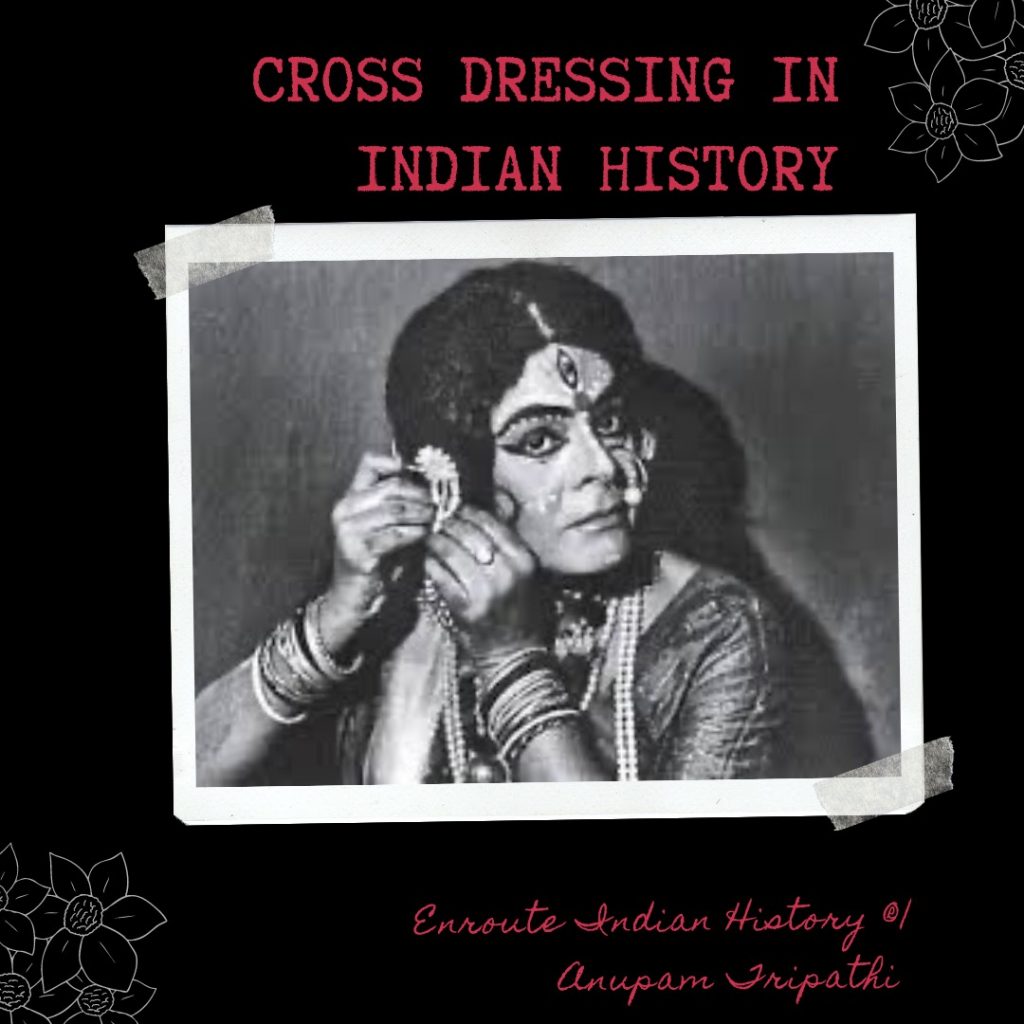
Article by EIH Researcher and Writer
Anupam Tripathi
I remember going to my mother’s school and the girls in the hostel would dress me up in their clothes, put on makeup on me and tie my hair in pigtails, and then take me to the photo studio to take my photos. This was followed by my obsession with Komolika from Kasauti. I used to roam around in saree with towel as my wig and perform Komolika all day long.My family loves telling this story to everyone
People cross – dress for various reasons;religious, burlesque, disguise, status gain, sexual excitement and most importantly search for an identity. It is as old as clothing itself. Mythology and history are full of cross-dressing incidents, mainly of men dressing or acting as women.According to the scriptures, cross-dressing as a woman is one of the eight evils that a man must avoid. The Mahabharata, in which Arjun disguised himself as Brihannala during his time in exile, is one of the earliest mentions of cross-dressing by a popular culture hero.
In the 18th century, Gangadhar Rao, the king of Jhansi, was desperately looking for a second wife from a Brahmin family. But several stories about her unconventional behaviour raised the concern of parents of marriageable girls. It was rumoured that Gangadhar started acting like a woman at times. He used to disappear and come back as a woman dressed in a choli and sari, with a colourful silk braid tied in hia knots, bracelets on his wrists, beads around his neck, a nose ring and jingling anklets. During those days he avoided the company of men and only sat and conversed with women. He would also observe four days of untouchability every month, as do menstruating women, and only then go to court after performing the ritual cleansing bath on the fourth day. He married a woman who used to disguise herself as a man and died fighting the British. She was none other than Rani Lakshmi Bai.
During the Colonial period, emerged the beginning of an era of unnerving portrayal of art on stage that almost marked a revolutionary theatre growth. Whiletheatre became predominantly the form of entertainment for the upper elite of the population, the “jatras” or “nautankis” conquered the masses.Women were not allowed to perform in the theater/jatras for a long, long time. The question is by whom were they represented? India’s fiercely conservative social system did not encourage co-ed theatre and it became common to have all male actors during a play.As the cross-dressed actors started out with heavier outfits and makeup than usual, they gradually became more mundane as the theatre grew by the day. Saree, which was once a unisex garment when nobles and commoners wore sarees to look as attractive as the fairer sex, made a comeback in menswear. This time on a more regular basis to meet all patriarchal needs. Sarees became a basic costume to look more feminine and graceful. Coming out of harsh politics of patriarchy and then taking their place in unprecedented art and then making a cult of themselves is no small feat. What these cross dressed men achieved was more than what the performance was meant to be.
Every March, thousands of people gather around the ancient temple of Charvara, Kerala, for an 11-day festival. During the last two days of the festival, ordinary men, ordinary professionals who go to the office, dress up as women for Chamayavilakku (chamaya is make-up and vilakku means lamp). Decorated with flowers and lamps in hand, these men wait for the goddess to bless them and grant their wishes. These men not only challenge values based on sex and gender. , they also question masculinity like never before. They bring out the other elements in a man and the changing emotions of his being.
Bibliography
- https://fashion-history.lovetoknow.com/fashion-history-eras/cross-dressing
- https://openthemagazine.com/art-culture/the-crossdressing-raja-and-rani-of-jhansi/
- Mrinal Pandey’s translation of 1857: The Real Story of the Great Uprising by Vishnu Bhatt Godshe Versaikar



















